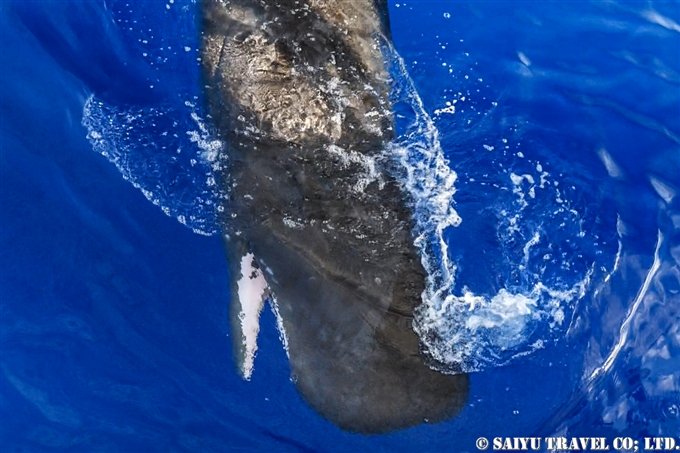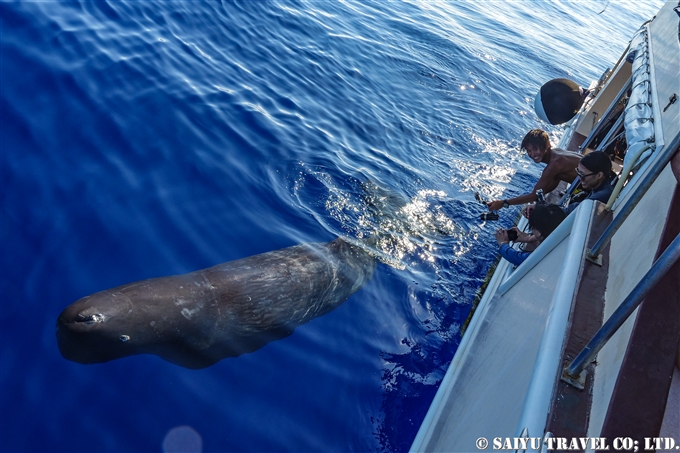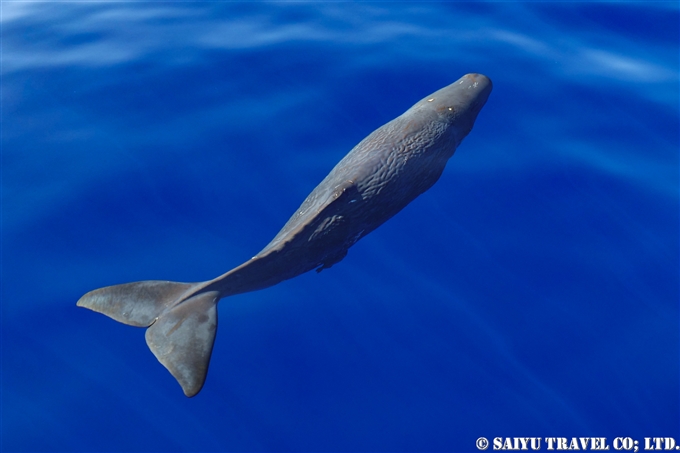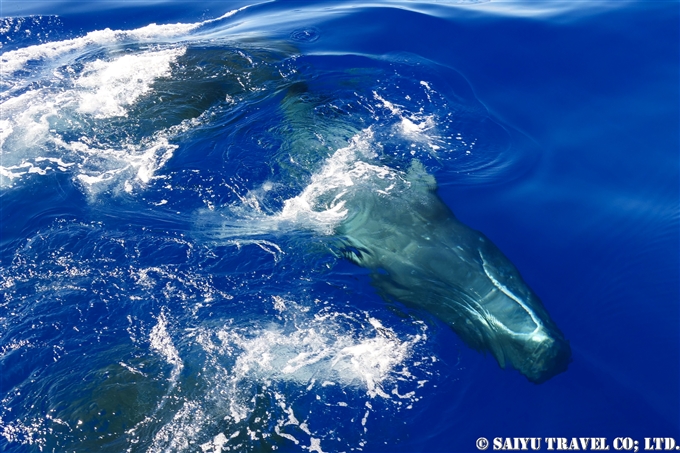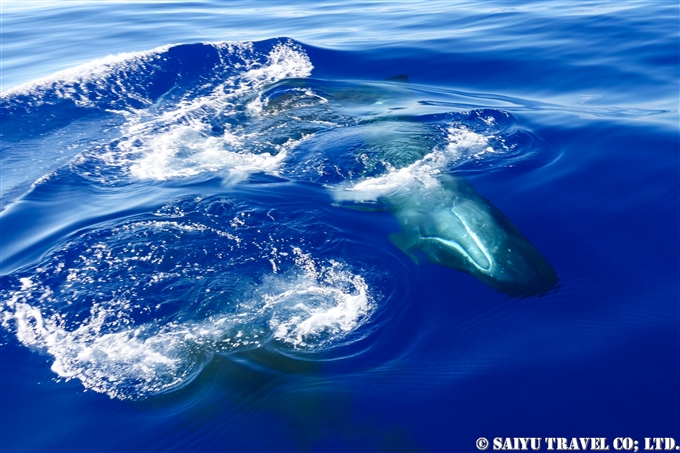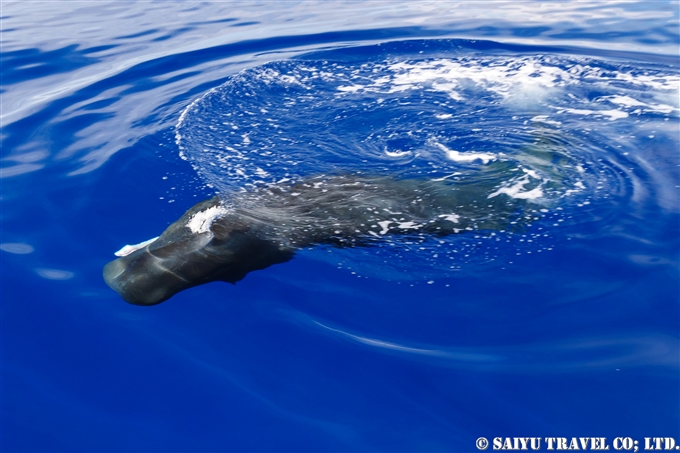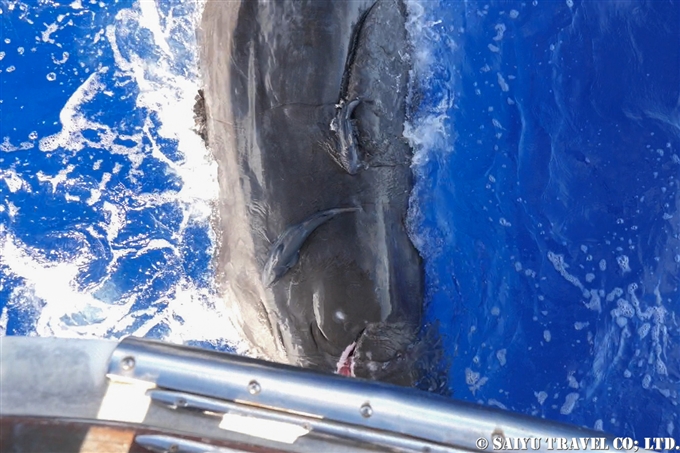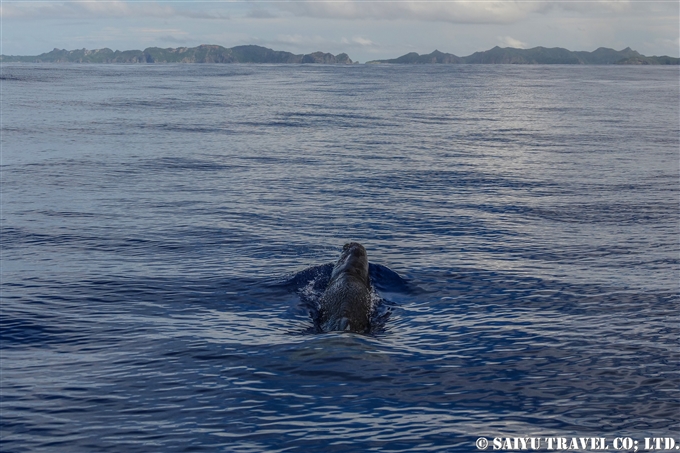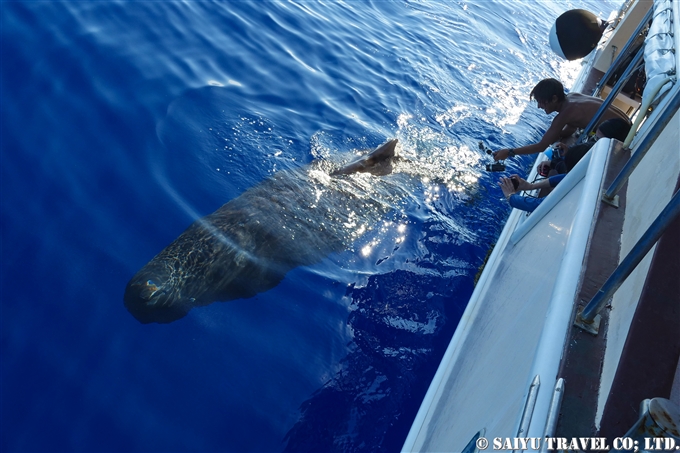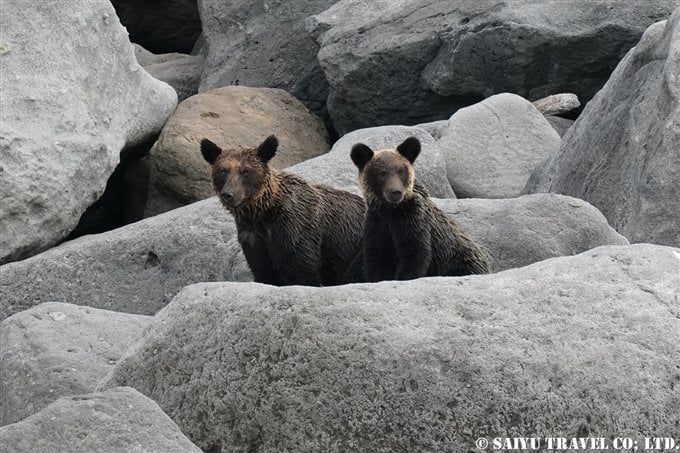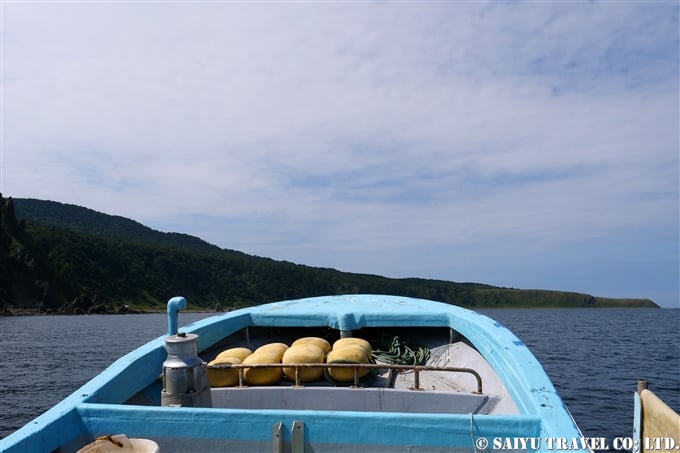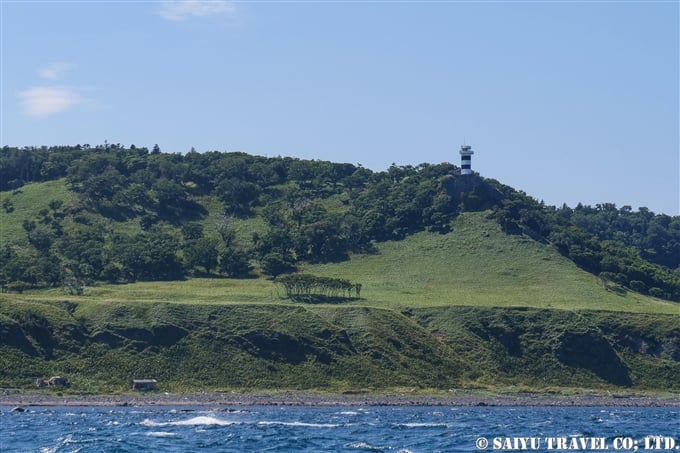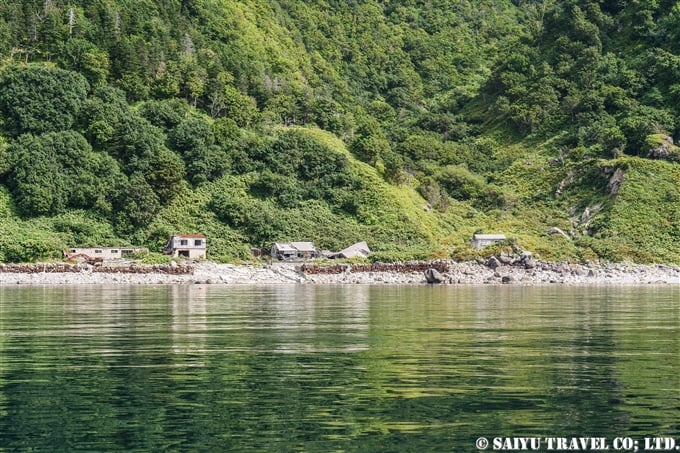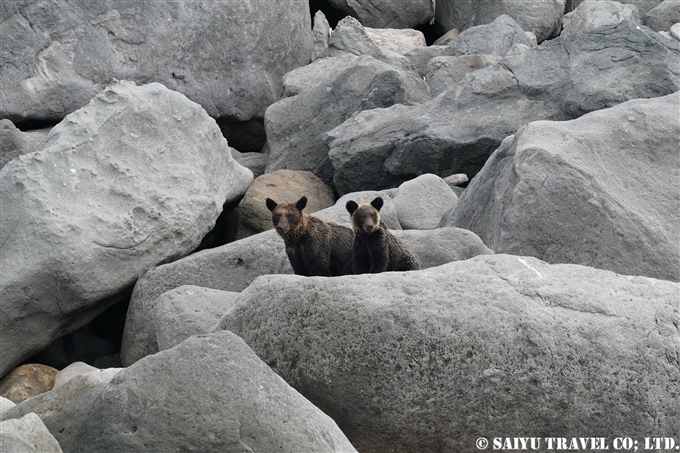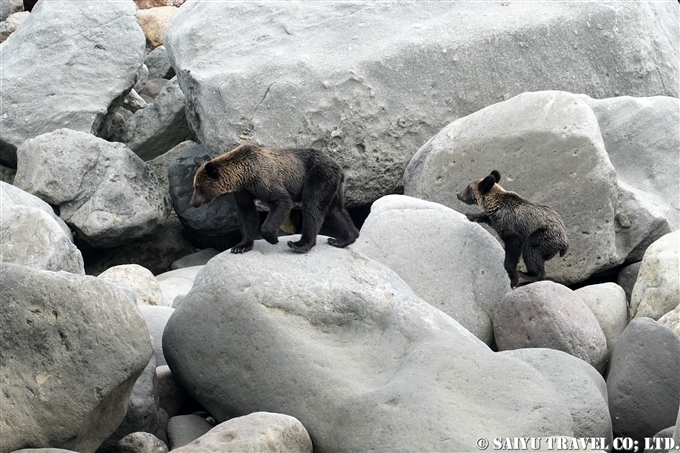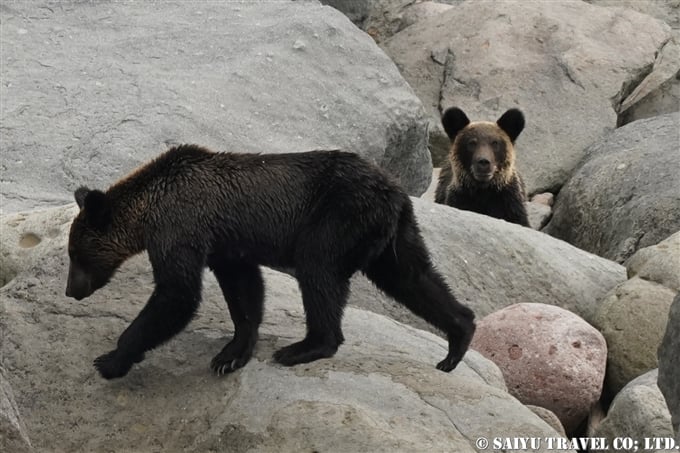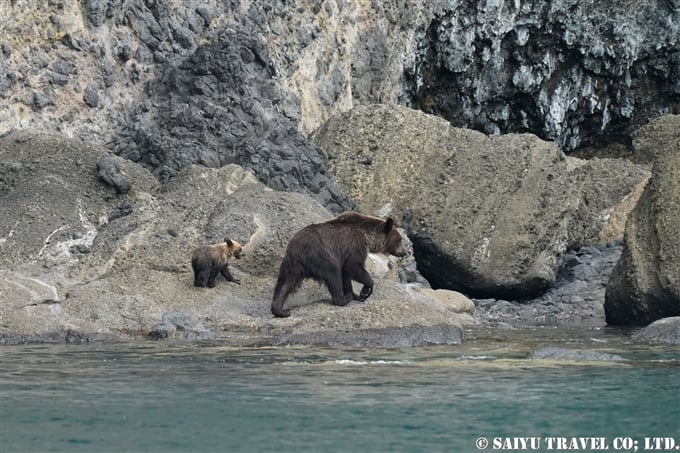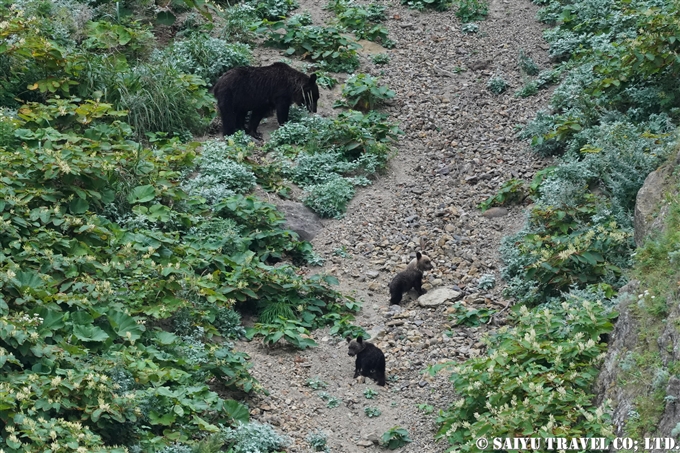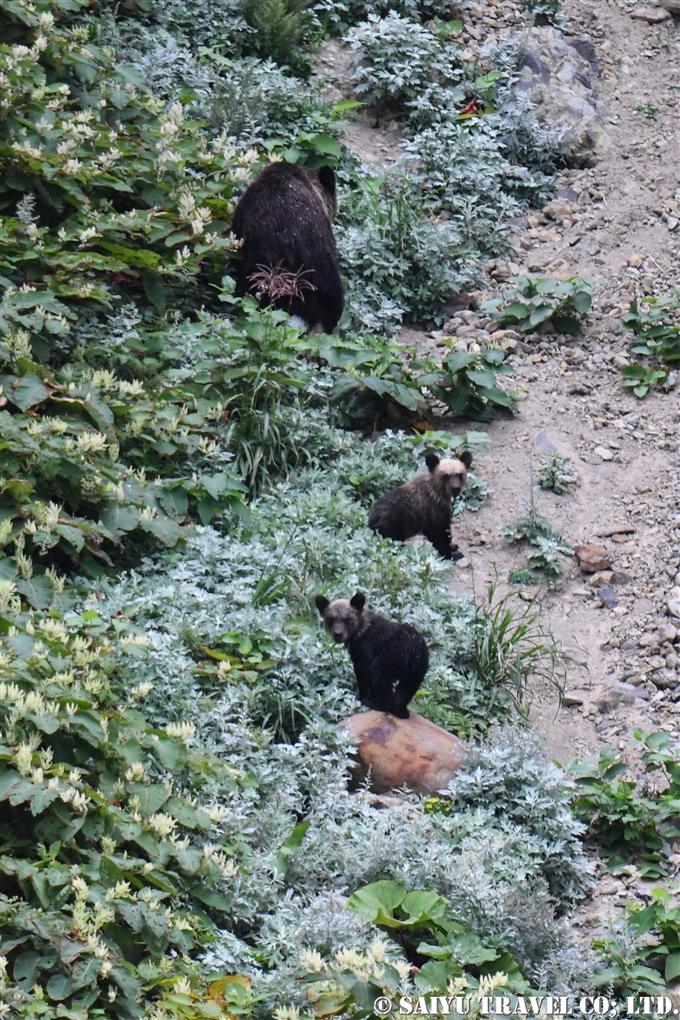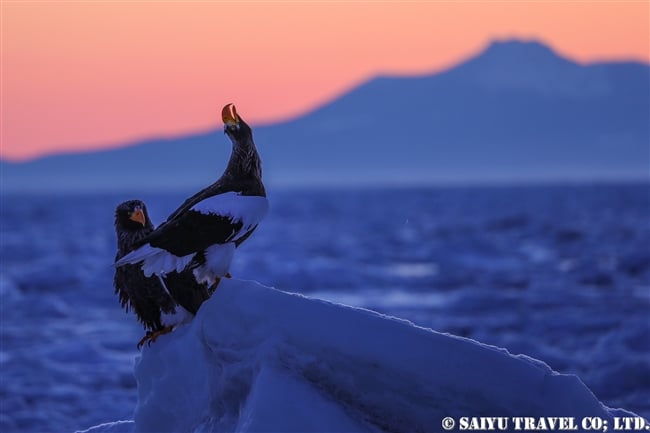
This is a report from our February 28th Rausu Drift Ice Cruise. We were told to be at the harbor at 4:45 in the morning, so we went straight from the “Washi no Yado”, where we were observing the Blakiston’s Owl up until 4:30am. Without a cloud in the sky, the stars were shining so brightly, in the crisp wintery air of Shiretoko. We headed to the harbor, filled with expectations thinking “Today might be a beautiful day.”
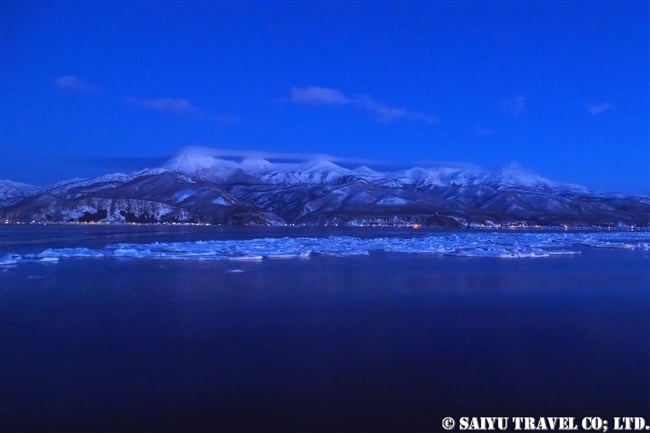
As we departed, I took this shot looking back at the town of Rausu with the backdrop of mountains on the Shiretoko Peninsula.
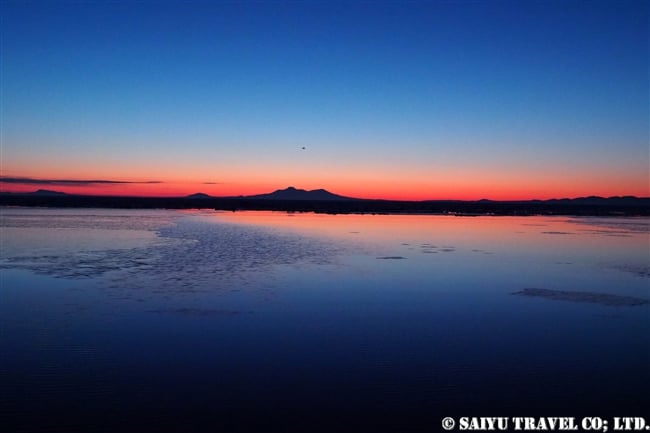
The Kunashir Island blanketed with red. The captain announced, “Today the drift ice is very close.” Sure enough, we could soon make out the dark shadowy outline of the drift ice.
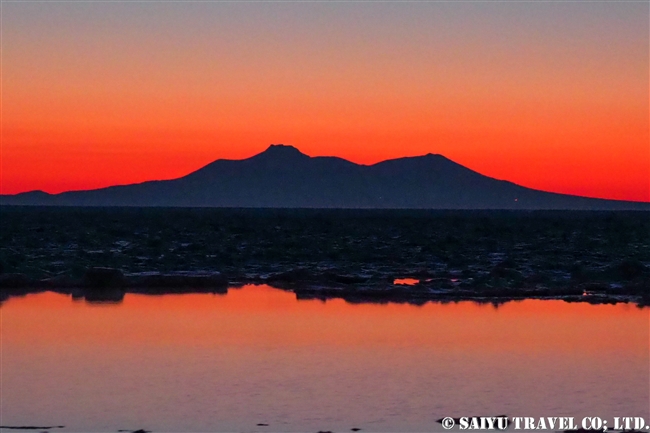
The drift ice in the foreground, with Kunashiri Island behind. It is beautifully silhouetted in the morning light. The captain let us know “The sun will come out soon.” Everyone was waiting on the deck.
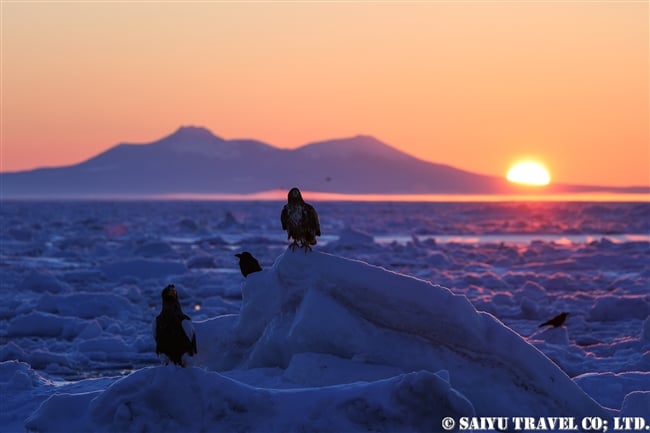
Daybreak.
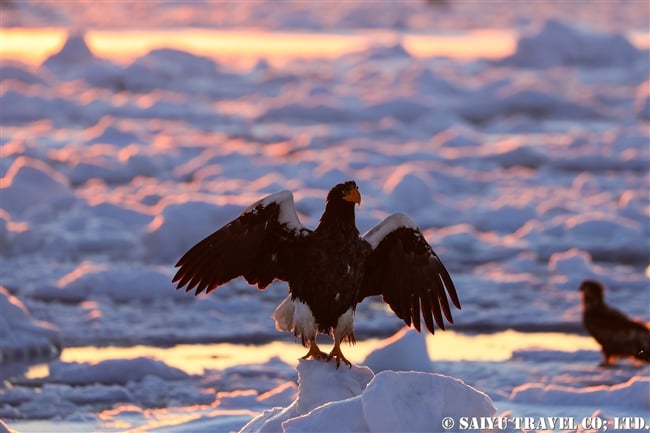
The Steller’s sea eagles on the drift ice with the morning sun.
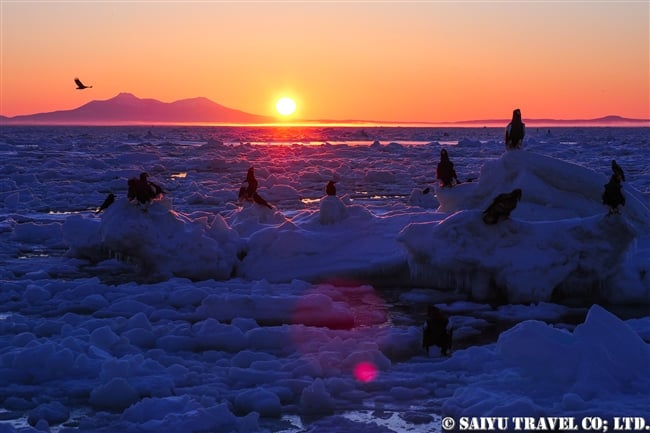
The Steller’s sea eagles and White-tailed eagles started to gather around our boat (and the crows too!) Besides that, it was a really beautiful day today!
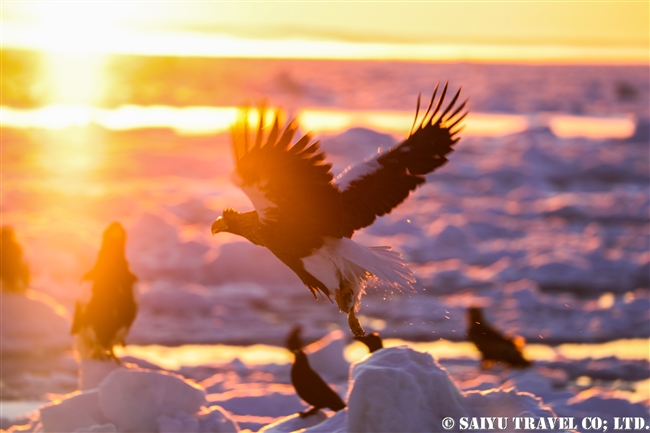
There are endless shutter clicks on the deck of the ship. Many foreigner bird photographers are on board for the tour and it is not limited to just Japanese people. The early morning daybreak cruise is quite a “hard challenge” because we had just stayed up all night, for observing the Blakiston’s Fish Owls, but this scenery is a wonderful reward for our efforts.
Photo & Text: Mariko SAWADA
Observation: February 2018, Rausu, Siretoko Peninsula, Hokkaido
*Contact us, Saiyu Travel for more information about wildlife and bird watching in Hokkaido. We can make various arrangements for your trip. We have a guesthouse, Shiretoko Serai, in Rausu, Shiretoko Peninsula.
Tags: Shiretoko peninsula, 羅臼, Oowashi, White-tailed eagle, Ojirowashi, White-tailed sea eagle, 知床, Steller's sea eagle, Birding tour Japan, Wildlife of Hokkaido, Rausu, Bird tour Japan, Wildlife of Japan, Rausu drift ice cruise, Bird Watching Japan, Birds of Hokkaido, Eagle photography of Japan, Wildlife in Japan, Birds of Japan, Birds Photography of Japan, 知床サライ, Wildlife Photography tour in Japan, Rausu sunrise drift ice cruise, Shiretoko Serai, Wildlife tour in Japan, Shireoko, Wildlife in Hokkaido





